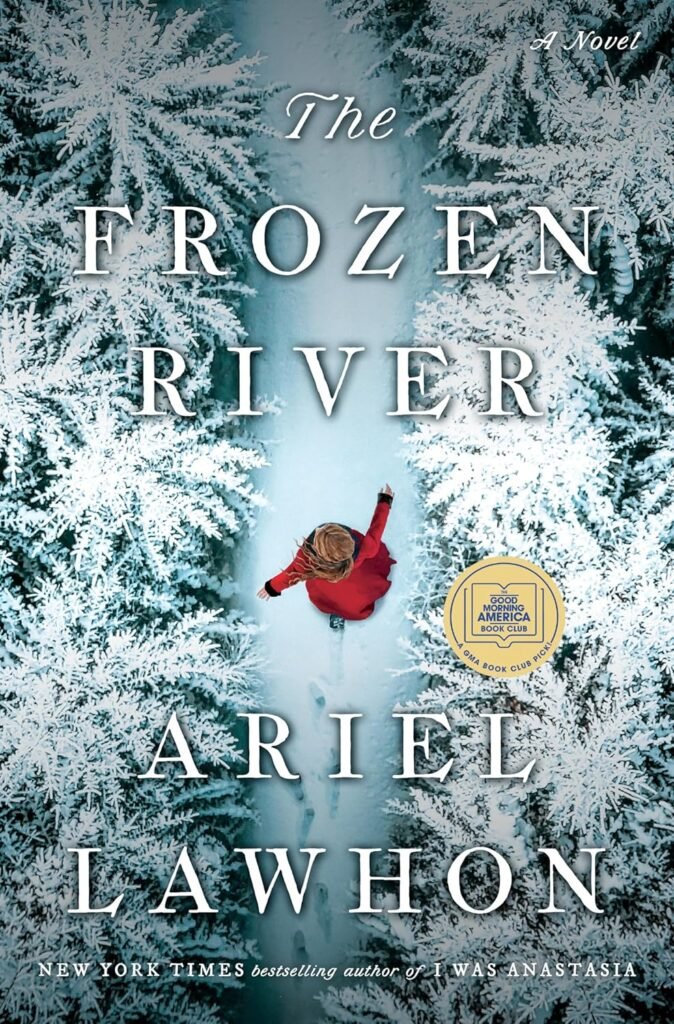A literary tapestry of historical intrigue, “The Frozen River” by Ariel Lawhon unravels a gripping narrative wrapped in the frigid embrace of 18th-century post-Revolutionary America. Selected as the GMA Book Club Pick in December, this novel utilizes historical fiction to spotlight the life of Martha Ballard, a midwife whose meticulous diaries provide a rare window into that era’s moral and social complexities. Lawhon masterfully crafts a tale rich in suspense, history, and human resilience.
Historical Context of The Frozen River
Life in 18th-Century Hallowell
Set in the austere landscapes of Hallowell, Maine, during 1789, Lawhon’s novel breathes life into a society grappling with transition. The Revolution’s embers had barely cooled, leaving behind uneven governance, an unstructured legal system, and a populace striving for stability. Amid this chaos, winter’s icy grip forced communities into close, often tension-filled quarters.
Snow-laden paths and frost-covered rivers became symbols of both isolation and connection. For immigrants and settlers alike, the unforgiving Maine winters compounded daily hardships—scarcity of resources, health crises, and the ceaseless effort to build a livelihood in a new world. Martha Ballard, the novel’s central figure, embodies this spirit of persistence, navigating a time where the survival of families depended on not just physical strength but an intimate web of community support.

Photo by Adam Grabek
Martha Ballard’s Role in History
Martha Ballard, immortalized through her diaries, emerges as a figure both ordinary and extraordinary. Between 1785 and 1812, she delivered over 800 babies in rural Maine, documenting each birth alongside observations on weather, illness, and community affairs. Ballard’s writings have been pivotal for historians, serving as a foundational text for understanding early American midwifery and the oft-overlooked influence of women in shaping societal structures. Learn more about Martha’s meticulous records and impact here.
Through Ballard, we glimpse an America in flux: communities built on shared trust yet fragmented by class, gender, and privilege. Her diaries echo with the voices of countless women like her, whose contributions were significant but rarely recorded.
Plot Overview
The Discovery of a Frozen Body
The novel ignites with the startling discovery of a man’s body encased in the icy Kennebec River. The mystery surrounding his death encapsulates both the literal chill of the Maine winter and the figurative frostiness of societal judgment. Was it murder or misfortune? The ensuing investigation draws the tight-knit community into a maelstrom of suspicion, betrayal, and conflicting loyalties.
Martha Ballard’s Fight for Justice
In a world where women’s voices were sidelined, Martha’s resolve becomes the story’s moral compass. Thrust into the investigation, she unravels hidden truths while safeguarding her family’s honor against a backdrop of whispering neighbors and glaring societal norms. Her journey illustrates not just a quest for justice but a battle against the entrenched patriarchy of her time.
Themes and Symbolism
Justice in a Developing System
At its core, The Frozen River probes the fragility of justice in a young nation. The legal system of post-Revolutionary America was as unformed as the ice in spring, riddled with bias and inefficiencies. Lawhon poignantly captures the tension of incomplete laws applied in a society still defining its moral compass.
The Role of Women in 18th-Century Society
Through Martha Ballard, the novel delves into the silent strength of women who upheld communities while denied recognition or agency. Their knowledge, whether in healing, birthing, or conflict resolution, was indispensable yet deemed marginal within the patriarchal frameworks of the time. Ballard’s resilience becomes a quiet but potent rebellion—a challenge to societal constraints.
Resilience Amid Hardship
More than anything, The Frozen River celebrates the sheer perseverance required to endure the era’s harshness. Be it the cold of winter, the sting of betrayal, or the fog of uncertainty, Lawhon’s characters consistently rise to meet their challenges, embodying the indomitable human spirit.
Ariel Lawhon’s Writing Style and Research
Blending Fact with Fiction
Lawhon’s genius lies in seamlessly weaving cold, hard facts into an electrifying fictional narrative. She draws heavily from Martha Ballard’s diaries, enriching her storytelling with historical authenticity. This blend of archival precision and creative imagination amplifies the novel’s impact, making every page feel both lived and legendary. Dive deeper into her creative process and inspiration.
Vivid Portrayal of 18th-Century Life
Through her evocative imagery and layered storytelling, Lawhon paints a visceral picture of the late 18th century. From the creak of icy riverbanks to the murmurs of village gatherings, she invites readers to not just witness but inhabit the world she creates—a world startlingly beautiful and ruthlessly unforgiving.
Critical Reception and Impact
Praise From Critics and Readers
Critics have celebrated The Frozen River for its gripping plot and rich historical detail. Publishers Weekly hailed it as a “masterful portrayal of a forgotten heroine.” The book’s selection by the GMA Book Club further attests to its universal appeal, marking it as a significant cultural contribution.
Why It Resonates With Modern Readers
At its heart, this is a story about justice, empathy, and the courage to defy limitations. Themes once woven into the fabric of a nascent America still echo in today’s debates on gender equality and systemic fairness. Lawhon’s narrative invites introspection, showing us how far we’ve come—and how much further we have to go.
Conclusion
The Frozen River isn’t merely a novel; it’s an intricately crafted bridge to the past. Ariel Lawhon’s portrayal of Martha Ballard’s life reminds us of the profound power found in everyday courage. As a GMA Book Club Pick, it underscores not only its literary merit but also its relevance, connecting history with timeless human struggles. Whether you’re a history enthusiast or simply someone who cherishes a good story, this is a masterpiece worth delving into.

